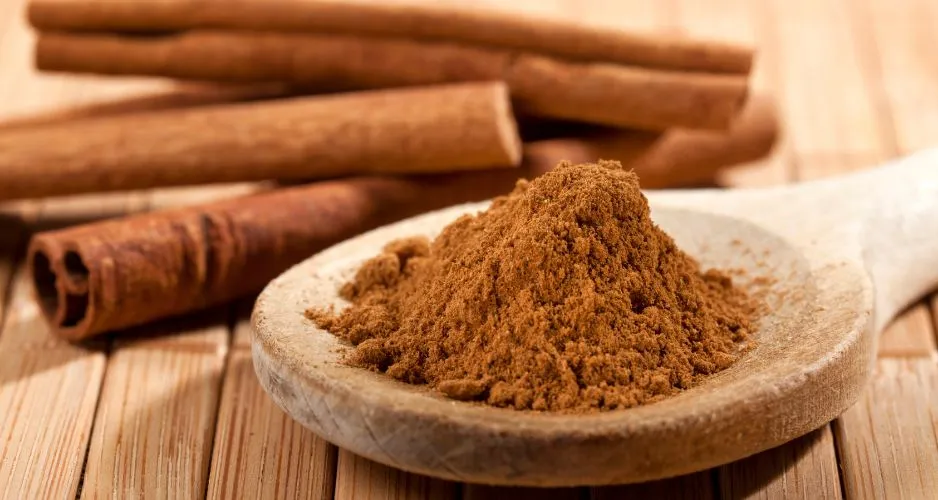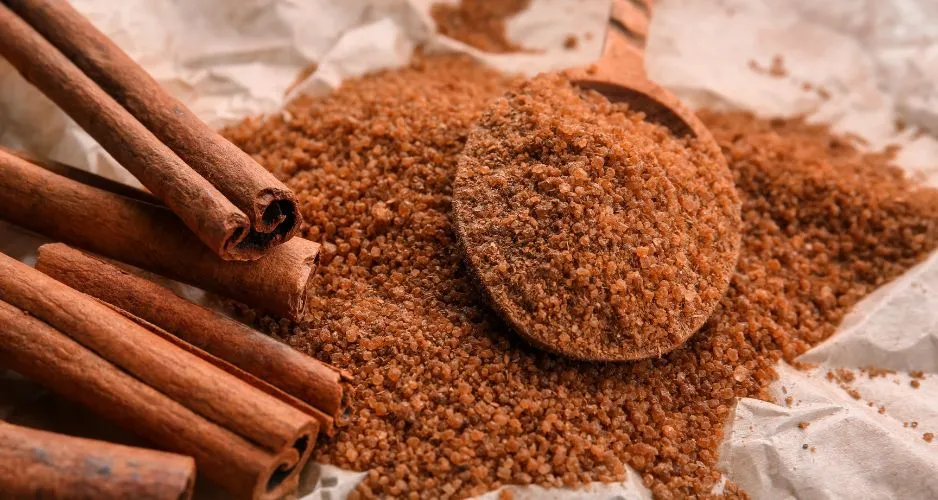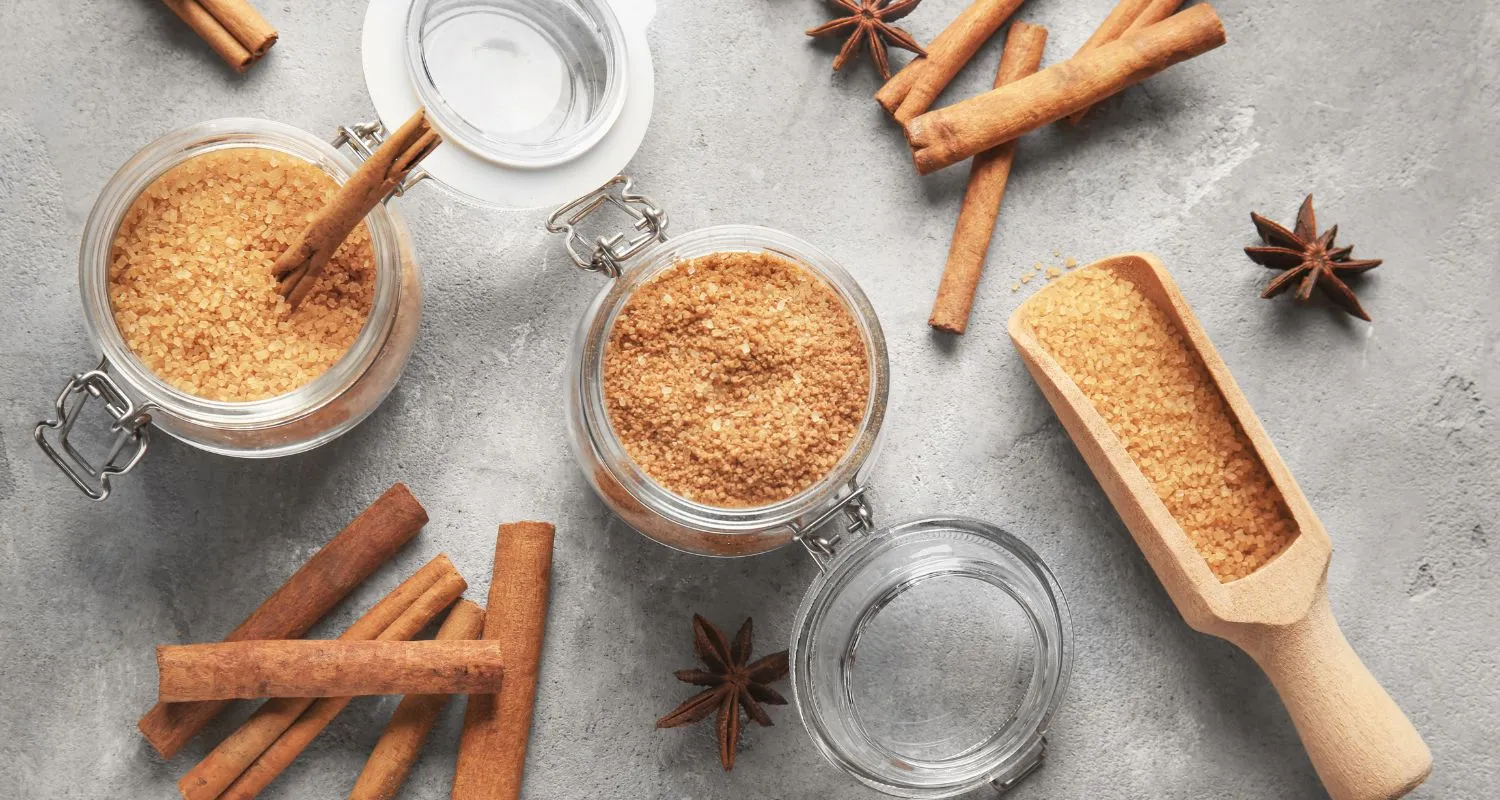Diving into the world of culinary delights, there’s a simple yet magical blend that stands out for its sweet warmth and comforting aroma: cinnamon sugar. This blend, a staple in many kitchens, transforms ordinary dishes into extraordinary treats with just a sprinkle. In this article, we’ll explore the perfect cinnamon sugar ratio, its versatile applications, and some FAQs to guide you in making the most out of this delightful mix. Whether you’re a baking enthusiast or someone who enjoys a dash of sweetness in your morning coffee, understanding the nuances of cinnamon sugar will elevate your culinary creations.
Introduction to Cinnamon Sugar
Cinnamon sugar, a blend as old as time, brings a touch of sweetness and a hint of spice to a myriad of dishes. This simple concoction, made from ground cinnamon mixed with granulated sugar, has the power to transform the mundane into the extraordinary. But what makes this mix so special, and how did it become a staple in kitchens around the globe?
The Sweet and Spicy World of Cinnamon Sugar
At its core, cinnamon sugar marries the warm, woody notes of cinnamon with the crisp sweetness of sugar, creating a flavor profile that is both comforting and invigorating. This blend is not just about taste; it’s about the experience it brings to each bite, enhancing textures and aromas, making it a beloved ingredient for both sweet and savory dishes.
Historical Significance and Uses
Cinnamon, one of the oldest known spices, has been cherished for its medicinal properties and distinctive flavor since ancient times. When combined with sugar, a luxury in the olden days, it symbolized wealth and opulence. Today, this mix is accessible to all and has found its way into various culinary traditions, from the cinnamon toast of American breakfast tables to the sugary topping on Mexican buñuelos during festive seasons.
The journey of cinnamon sugar from a luxury to a pantry staple is a testament to its versatility and enduring appeal. Whether sprinkled over a warm toast or used as a secret ingredient in holiday cookies, its perfect balance of sweetness and spice adds a layer of complexity to simple ingredients, making every meal a celebration of flavors.
In the next section, we’ll delve into the heart of cinnamon sugar—the perfect ratio that defines its essence and how to tweak it for different culinary adventures. Stay tuned as we uncover the secrets to making your cinnamon sugar blend sing in every dish.
Understanding the Ratio
The magic of cinnamon sugar lies not just in its ingredients but in the precise ratio that balances the boldness of cinnamon with the sweetness of sugar. This ratio is the cornerstone of creating a blend that can complement a wide array of dishes without overwhelming the palate.

The Ideal Cinnamon to Sugar Ratio
The consensus among culinary experts is that the perfect cinnamon sugar ratio is 1:4, meaning one part cinnamon to four parts sugar. This ratio ensures that the cinnamon’s warmth and spice are evident without overpowering the sugar’s sweetness. It’s a delicate balance that can elevate a simple dish to something truly special.
How to Adjust the Ratio for Different Uses
While the 1:4 ratio is a great starting point, don’t be afraid to tweak it based on personal preference or specific recipes. For a more pronounced cinnamon flavor, you might increase the cinnamon slightly. Conversely, if you’re after a subtler touch, reducing the cinnamon will do the trick. The beauty of cinnamon sugar is its adaptability.
Expert Opinions on the Perfect Ratio
Culinary experts often emphasize the importance of starting with high-quality ingredients. The type of cinnamon used, whether Ceylon or Cassia, can affect the blend’s flavor profile. Similarly, the choice between granulated, caster, or even brown sugar can alter the texture and taste of the final product.
Incorporating cinnamon sugar into your culinary repertoire opens up a world of flavor possibilities. From the classic cinnamon toast, which becomes a comforting breakfast with just a sprinkle, to more inventive uses like enhancing the flavor of sweet potato fries or adding a twist to your coffee, the right ratio of cinnamon to sugar can transform simple ingredients into an unforgettable experience.
As we continue to explore the wonders of cinnamon sugar, remember that cooking is as much about personal taste as it is about following recipes. Experimenting with the cinnamon sugar ratio can lead to delightful discoveries and, perhaps, your signature blend.
In the next part, we’ll dive into the delicious ways to use cinnamon sugar, showcasing classic and creative recipes that highlight its versatility. Whether you’re a seasoned baker or a curious cook, there’s a cinnamon sugar recipe waiting for you to try.
Delicious Ways to Use Cinnamon Sugar
Cinnamon sugar’s allure isn’t just in its taste but also in its versatility. This sweet and spicy blend can enhance a wide range of dishes, from breakfast favorites to decadent desserts. Let’s explore some classic and creative ways to incorporate cinnamon sugar into your cooking and baking.
Classic Recipes with Cinnamon Sugar
Cinnamon Toast
A simple yet unbeatable classic, cinnamon toast is the epitome of comfort food. Just sprinkle your cinnamon sugar blend over buttered toast and broil for a few minutes until golden and bubbly. The result? A crispy, sweet, and spicy treat that’s perfect for breakfast or a cozy snack.
Snickerdoodle Cookies
Snickerdoodles are a beloved cookie, soft on the inside with a crackly cinnamon sugar crust. The secret to their signature texture and taste? Rolling the dough balls in cinnamon sugar before baking. This step ensures each cookie is wrapped in a sweet, spicy coat that’s irresistible.
Creative Recipes Incorporating Cinnamon Sugar
Cinnamon Sugar Donuts
Imagine starting your day with a warm, freshly baked cinnamon sugar donut. Whether you prefer them baked or fried, coating your donuts in cinnamon sugar right after cooking will give them a delightful crunch and a flavor boost that’s hard to beat.
Cinnamon Sugar French Toast
Take your French toast to the next level by adding cinnamon sugar to the egg mixture and sprinkling more on top while cooking. This method infuses the bread with a sweet, aromatic flavor, making each bite a perfect blend of soft, crispy, and spicy sweetness.
The versatility of cinnamon sugar extends beyond these recipes. It can be a game-changer in fruit salads, adding depth to the natural sweetness of the fruits. Or, try mixing it into your coffee or tea for a subtly spiced sweetness that transforms your everyday beverage into a special treat.
As we’ve seen, cinnamon sugar is not just a blend but a gateway to culinary creativity. Its ability to elevate simple dishes into memorable delights is why it remains a favorite in kitchens worldwide. In the next section, we’ll address some frequently asked questions about cinnamon sugar, ensuring you have all the knowledge you need to make the most of this wonderful blend.
FAQs
When it comes to cinnamon sugar, there are always questions popping up about how to make it, use it, and store it. Let’s dive into some of the most frequently asked questions to shed light on this delightful blend.
What is the best cinnamon sugar ratio for baking?
The golden rule for a balanced cinnamon sugar blend is a 1:4 ratio—one part cinnamon to four parts sugar. This ratio ensures a harmonious balance between sweetness and spice, ideal for baking. However, feel free to adjust according to your taste or the specific needs of a recipe.
Can I make cinnamon sugar with brown sugar?
Absolutely! Swapping white sugar for brown sugar adds a deeper, caramel-like sweetness to the mix. Brown sugar’s moisture also lends a slightly different texture, making it a fantastic choice for toppings on baked goods where a bit of moisture can enhance the overall experience.
How long can I store homemade cinnamon sugar?
Stored in an airtight container in a cool, dry place, homemade cinnamon sugar can last for several months. The key is to prevent moisture from getting in, as it can cause clumping and affect the blend’s quality. If stored properly, your cinnamon sugar will be ready to sprinkle its magic whenever you need it.
What is the use of cinnamon sugar?
Cinnamon sugar, a delightful blend of ground cinnamon and granulated sugar, serves a versatile purpose in the culinary world. Primarily, it’s used as a topping or ingredient to add a sweet and spicy flavor to baked goods, toast, cereals, fruits, and beverages. Furthermore, it’s a staple in creating the classic cinnamon roll and enhancing the taste of coffee or tea.
How much is 1 gram of cinnamon powder?
1 gram of cinnamon powder is roughly equivalent to about 1/2 teaspoon, though this can vary slightly depending on the fineness of the grind. It’s a handy measure for recipes requiring precise spice quantities, ensuring the flavor is balanced without overpowering other ingredients.
What makes cinnamon sweet?
Cinnamon’s unique sweetness stems from its essential oil, cinnamaldehyde, which imparts a naturally sweet flavor profile despite the spice not containing sugar. This sweetness is complemented by its warm, woody, and slightly pungent taste, making cinnamon a favorite in both savory and sweet dishes.
How much cinnamon to use in baking?
The amount of cinnamon used in baking varies depending on the recipe and personal taste preferences. Generally, for a batch of cookies or a cake, 1 to 2 teaspoons is sufficient to impart a noticeable but not overwhelming cinnamon flavor. In contrast, cinnamon rolls might require up to 2 tablespoons to achieve their signature taste.
What is cinnamon sugar made from?
Cinnamon sugar is made from a simple mixture of ground cinnamon and granulated sugar. The typical ratio is about 1 part cinnamon to 4 parts sugar, but this can be adjusted based on personal preference for sweetness and intensity of the cinnamon flavor.
Can you use cinnamon sugar in place of cinnamon?
While cinnamon sugar can be used in place of plain cinnamon in some recipes, it will introduce additional sweetness. This substitution works best in desserts or sweet dishes where the extra sugar will not disrupt the overall flavor balance.
How much is 4 grams of cinnamon?
4 grams of cinnamon is approximately equal to 1 and 1/3 teaspoons. This conversion is useful for accurately measuring cinnamon for recipes that require precise spice levels.
How much is 3 grams of cinnamon?
3 grams of cinnamon translates to about 1 teaspoon, offering a convenient measurement for adding the spice to various dishes, ensuring a balanced flavor profile.
How much is 1.5 grams of cinnamon?
1.5 grams of cinnamon is roughly equivalent to 1/2 teaspoon. This measurement is particularly useful for fine-tuning the flavor intensity in recipes requiring a subtle hint of cinnamon.
Is cinnamon sweet without sugar?
Yes, cinnamon possesses a natural sweetness without sugar, thanks to its essential oils, particularly cinnamaldehyde, which give it a sweet, warm, and slightly spicy flavor profile.
Is cinnamon sweet like sugar?
While cinnamon has a naturally sweet flavor, it is not sweet like sugar. Its sweetness is more complex, characterized by warm, woody notes and a slight spiciness, making it distinct from the simple sweetness of sugar.
Is pure cinnamon sweet?
Pure cinnamon does exhibit a natural sweetness, attributed to its essential oils. This sweetness, combined with its aromatic and spicy qualities, makes it a uniquely flavorful spice, distinct from sugary sweetness.
Is 1 teaspoon of cinnamon too much?
Whether 1 teaspoon of cinnamon is too much depends on the recipe and personal taste. For most baking recipes, it’s a common measurement that adds a pleasant warmth and depth of flavor without being overpowering.
Is 2 teaspoons of cinnamon a day too much?
Consuming 2 teaspoons of cinnamon a day is generally considered safe for most people, but it’s important to listen to your body and adjust according to personal health conditions. Excessive consumption can lead to potential side effects, so moderation is key.
These FAQs highlight the simplicity and versatility of cinnamon sugar. Whether you’re a baking novice or a seasoned chef, this blend offers endless possibilities to explore flavors and textures in your culinary creations.
In the next part of our journey through the world of cinnamon sugar, we’ll look into the health considerations of using this blend. Understanding its nutritional aspects can help you enjoy its delightful taste while keeping your health in check. Stay tuned for insights on balancing flavor and health in your sweet treats.
Health Considerations
While cinnamon sugar adds a delightful flavor to various dishes, it’s also wise to consider its health implications. Moderation is key, especially when it comes to sugar intake. Let’s delve into the nutritional aspects of cinnamon sugar and how to enjoy its benefits responsibly.

Nutritional Information of Cinnamon Sugar
Cinnamon, on its own, is known for its health benefits, including anti-inflammatory properties and the ability to lower blood sugar levels. However, when mixed with sugar, these benefits need to be balanced with the potential health risks associated with high sugar consumption, such as weight gain and increased risk of heart disease.
Balancing Flavor and Health
To enjoy cinnamon sugar without overindulging in sugar, consider using it sparingly as a finishing touch rather than a main ingredient. Additionally, exploring sugar alternatives can be a wise choice for those monitoring their sugar intake. For instance, using a mix of cinnamon with stevia or a sugar substitute can provide the sweetness and flavor of cinnamon sugar with fewer calories.
Incorporating cinnamon sugar into your diet offers a chance to enjoy the rich flavors it brings to dishes while being mindful of health considerations. By choosing high-quality cinnamon, opting for natural sugar alternatives, and using the blend judiciously, you can add a touch of sweetness and spice to your meals without compromising your health goals.
As we wrap up our exploration of cinnamon sugar, remember that this blend is more than just a combination of ingredients. It’s a gateway to creativity in the kitchen, a nod to culinary traditions, and a simple pleasure that elevates everyday moments. In the final part of our article, we’ll sum up the key takeaways and encourage you to experiment with cinnamon sugar in your cooking and baking adventures.
Conclusion
As we’ve journeyed through the sweet and spicy world of cinnamon sugar, we’ve uncovered its perfect ratio, explored its versatile uses, answered common questions, and considered its health implications. This simple blend, with its rich history and wide array of applications, truly is a testament to the magic that happens when two ingredients come together in perfect harmony.
Key Takeaways on Cinnamon Sugar Ratio
The ideal cinnamon sugar ratio of 1:4 provides a balanced blend that can enhance a variety of dishes without overwhelming them. Remember, this ratio is a starting point; feel free to adjust it based on your personal preferences and the specific needs of your recipes.
Encouraging Experimentation and Personal Taste
The beauty of cinnamon sugar lies in its simplicity and the endless possibilities it offers for culinary creativity. Whether you’re sprinkling it over your morning toast, incorporating it into your favorite cookie recipe, or using it to add a new dimension to savory dishes, cinnamon sugar invites you to experiment and personalize your creations.
In closing, I encourage you to embrace the versatility of cinnamon sugar. Let it inspire you to explore new flavors and bring a touch of sweetness and warmth to your cooking and baking. Remember, the best dishes are made not just with ingredients but with love, creativity, and a dash of adventure.
As you continue to experiment with cinnamon sugar, may your kitchen be filled with delightful aromas, your dishes with unmatched flavors, and your moments with joy and satisfaction. Here’s to the sweet (and spicy) adventures that await with just a sprinkle of cinnamon sugar!
